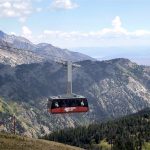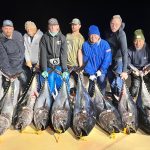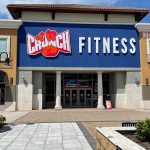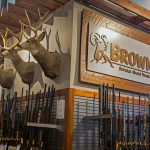The SnowSports Industry launched into the 2004-05 season with solid pre-season sales fueled by good snowfall in the western states, particularly the Sierra. According to the SIA and The Leisure Trends Group, total industry sales increased 3.0% to $323.3 million for the August-October period of 2004, compared to $313.7 million reported last year.
In looking at the numbers, three big trends are emerging this year. First it is evident that chain store average selling prices-and hopefully margins – are benefiting from the decreased competition as a result of consolidation. Second, free-style, or “New School” skiing is breathing new life into the sport, and finally, both specialty and chain retailers kept their inventories lean through the off-season, cutting the number of carryover sales and hopefully boosting overall margins.
Chain SnowSports retailers were able to boost the average selling price in nearly every category, with the only exception being telemark equipment. The total number of units sold across all categories through Chain retailers dropped roughly 4% but dollar sales increased 12.3%.
At chain stores, the ASP of Integrated ski systems jumped to $416 compared to $343 last year. This allowed Chain retailers to sell 10% fewer units, but post a revenue increase of 10% in the category. Ski Boot sales declined 23% in units, but again drastically higher ASPs allowed 14% higher revenues.
The same trend carried over into Snowboard Equipment as well. Units sold declined 16% at Chain stores, but revenues in the category jumped 16%. Snowboard ASPs climbed to $208 compared to $145 last year, while binding ASPs increased from $75 to $112. Snowboard Boot units sold fell 8% while revenues increased 30%.
These increases in the overall ASPs for SnowSports Equipment at Chain retailers could be the result of several converging factors. SIA and The Leisure Trends Group suggest that the decreased competition resulting from the recent consolidation at retail has allowed several Chain stores to cease price competition, and several other factors are coming into play as well.
The product mix sold at retail is changing, there is evidence of fewer carry-over and close-out sales, and chain retailers could now have access to some higher price-point brands. The final factor is the declining value of the dollar. With much equipment imported from European manufacturers, the de-valued dollar is boosting both wholesale and retail prices up.
Nordic and Telemark Equipment did not experience the same boost in ASP as Alpine Ski and Snowboard at Chain retailers. In fact, Telemark Equipment experienced a drastic price reduction, with units sold jumping 40%, but dollars dropping 5%. Nordic Equipment saw a 57% increase in units sold, and an 18% increase in revenues.
However, Telemark Equipment prices held steady through the specialty channel, with a 48% increase in units sold and a 47% revenue increase. The ASP for a pair of Telemark Skis increased from $335 last year to $381 this year. Nordic Equipment sales fell 22% in units and 6% in dollars.
As Freestyle Continues Momentum
The second major trend evident in the Retail Sales Audit is the astronomical growth in Freestyle Ski Equipment. At Specialty retailers, Twin-Tip Ski revenues increased 72%, but unit sales increased 85%. With demand this high, and retailers and vendors alike struggling to keep inventory on the shelves, prices should hold steady or even increase. However, the ASP at Specialty retailers fell to $351 this year compared to $379 last year. Inventories for the category are up 34% over last year, but the SIA contests that this will not be enough to carry through the season.
Unlike the growing telemark and alpine touring growth trends, which help retailers sell more gear but generally do not pull in participants new to the world of skiing, free-style has the potential to open up the sport to a whole new generation, and perhaps bring along with it the first participation increase in years.
Finally, carry-over sales plummeted in just about all categories at Specialty and Chain retailers. At Chain stores, carry-over sales of Alpine Skis fell 28%; Bindings fell 40%; and Snowboards fell 48%. Cleaner inventories at retail at the end of last season and less carry-over inventory at the vendor level are clearly potential reasons for this shift, a new reality that points to another reason why ASPs were higher at Chain stores and could be seen as a positive for retail margins.
One final trend jumped out of the report. Many ski manufacturers went back to the drawing board on the design of their Carver Skis after seeing a substantial dollar decrease last season (down 37% to $14.4 million). The wider waist evident on many models seems to be making a difference. Pre-season sales of Carver Skis increased 35% in units and 62% in dollars during the pre-season.
The Leisure Trends Group and the SIA produce the Top-Line Retail Audit six times per year covering the August-October, November, December, January, February and March periods. Copies of the report are available through the SIAs research division at:
www.TheSnowTrade.org















